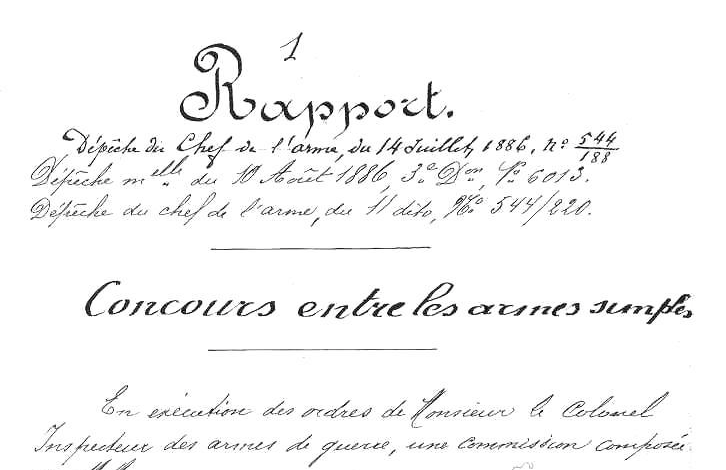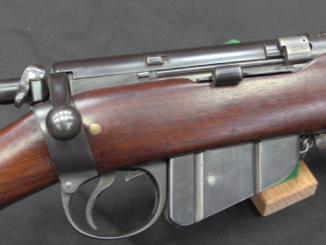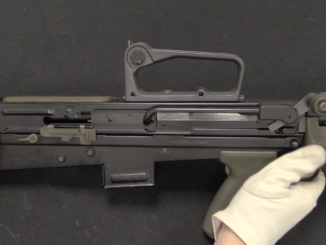Today we have a very odd BSA prototype Long Lee rifle. The details of its production are unknown, but it has good provenance; the Charnwood Ordnance collection. What makes the rifle unusual is a unique style of split charger guide unlike either the SMLE type fixed guides or the earlier CLLE guides mounted to the bolt head. It has commercial proof markings, and nothing on the receiver socket. An interesting mystery rifle for you Lee Enfield enthusiasts…
Related Articles

Bolt Action Rifles
Belgian 1886 Rifle Trials Report (Translated to English)

Bolt Action Rifles
Lee-Speed Military Model (Video)

Bolt Action Rifles

I’m curious how a rifle from the Charnwood Ordnance collection ended up in Ian’s house? Did Ian buy it somewhere along the line? Another collector lend it?
Perhaps related to this patent as seen on Espacenet
GB190514587 (A) – Improvements in Certain Parts of Magazine-rifles
BIRMINGHAM SMALL ARMS CO LTD; GEORGE NORMAN
1906-01-18
“14,587. Birmingham Small Arms Co., and Norman, G. July 15. Breech actions, sliding breech-block. -Relates to guides for the cartridge chargers or clips attached to rifles of the Lee – Enfield and similar types. The right – hand guide, which is usually connected to the breech-bolt, is, according to the present invention, attached to the body a and made of the form shown at e in the sectional view, Fig. 3, having on its inner side a clearance or passage f so that the head of the bolt can pass through to allow the bolt to be fully withdrawn.”
So, when can we look forward to the 1000th Lee Enfield posting by Ian? Laughter.
You best start believing in Enfield stories…..You’re in one.
It is very interesting, especially, to see how the developers consistently went to the solutions that can be seen in the final versions.
Judging by the cutouts on the sides of the receiver, they already knew (or guessed) about the problem with the brass breaks.